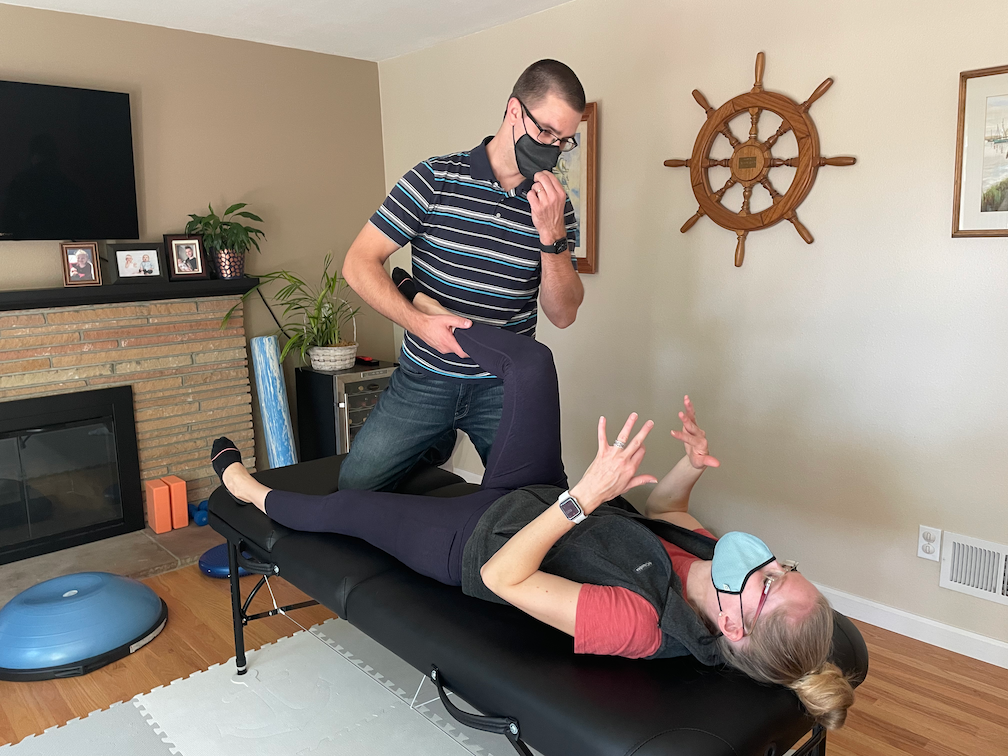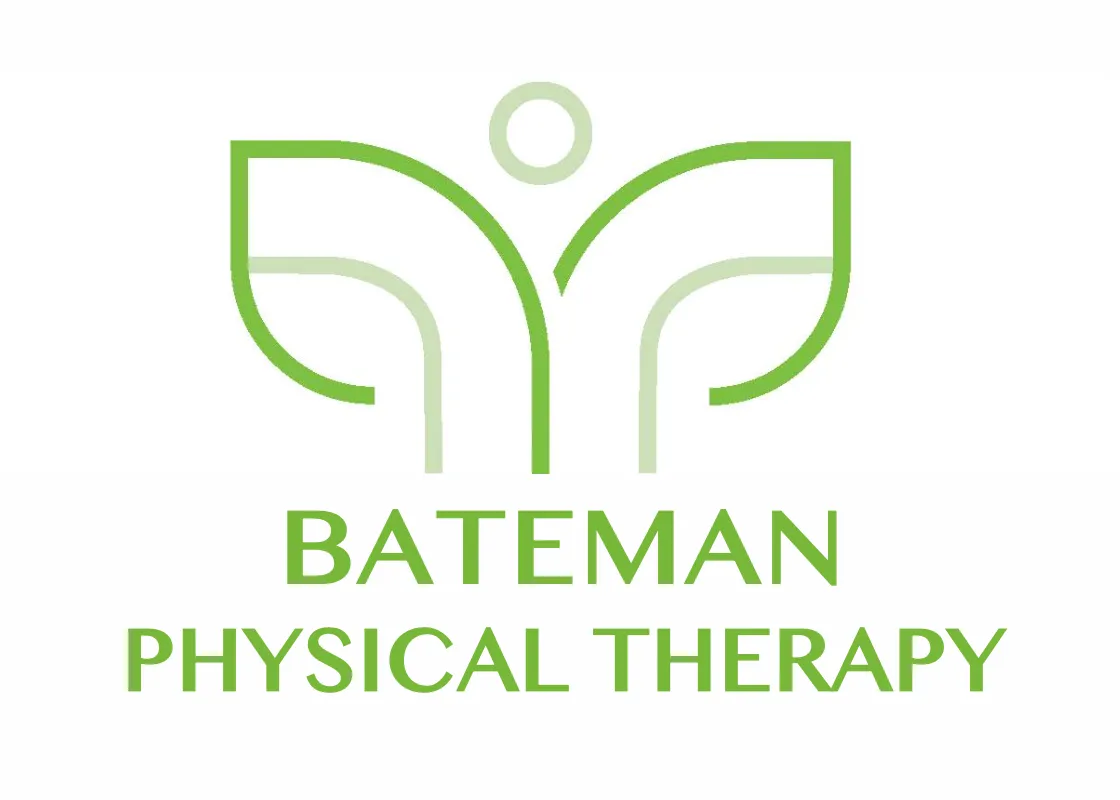Let’s chat about nerve pain and the widely used term, sciatica. I’d like to reveal more about this topic. I will go through some causes and treatments to create less fear around sciatica and radiculopathy.
WHAT IS SCIATICA?
Sciatica is typically seen as nerve pain. This pain typically runs from your low back, to your butt, then down the back of your leg. The sciatic nerve runs the length of the spinal cord, exits the spinal cord at the low back (lumbar region), and innervates, or enters a muscle in, the back of your leg and into your foot.
As the sciatic nerve branch exits the spinal cord, it passes vertebrae (bony part of back), and discs (the “shock absorbers”) in order to reach your muscles. This “innervation” provides sensation and the creation of movement. The sciatic nerve commonly causes lumbar pain, or low back pain. Let’s explore why this is the case.
WHY DOES THE SCIATIC NERVE COMMONLY CAUSE LOWER BACK PAIN?
The sciatic nerve exits the spinal cord between the lowest lumbar segment of your back (L5) and the beginning of your sacrum (S1). L5 takes most of the load in your back through daily wear and tear. Imagine stacking a pile of bricks, which brick would take the most load? The lowest brick, or the L5 segment. If you are also suffering from back pain, I would recommend you read this article to help you find some relief.
Your lumbar spine is made to take this kind of load.
AS WE REPETITIVELY LOAD THE LUMBAR SPINE OVER TIME, THE BODY ADAPTS AND MAKES CHANGES TO THE DISC USUALLY IN THE FORM OF:
- Lost disc height through a loss of water content (natural aging process)
- Changes in the outer portions of the disc create shifts in disc content; think of taking a bite out of a jelly doughnut and imagine the jelly shifting as you sink your teeth in
- With disc changes, compression of the sciatic nerve can occur causing classic nerve symptoms. For Instance tingling (aka paresthesias), numbness, burning, throbbing, aching, weakness, etc.
WHAT IS LUMBAR RADICULOPATHY?
Radiculopathy is when a nerve exiting the spinal cord gets compressed. It can happen at any level in the spine. Nerves exit the spinal cord at every level of your body – from your head down to your toes.

4 WAYS NERVES CAN BECOME COMPRESSED:
1) Bone spur – The body adapts to repetitive loads and creates more bone on top of bone.
2) Disc bulge – Disc content shifting.
3) Loss in disc height – Preferred term to define this phenomenon: “desiccation” (loss of fluid in disc). This occurs naturally as we age. I have also heard Degenerative disc disease, or DDD, used to describe this natural fluid loss.
4) Tumor – The top result in Google for “Sciatica and Radiculopathy is this article by John Hopkins Medicine. If you’re looking to learn more about the anatomy of the spine, what causes radiculopathy, or non-invasive and surgical interventions for radiculopathy I would follow the link for John Hopkins.
WHAT IS THE DIFFERENCE BETWEEN SCIATICA AND LUMBAR RADICULOPATHY?
Lumbar radiculopathy and sciatica can be used interchangeably. Sciatica is a type of radiculopathy affecting the sciatic nerve exiting the lumbar spine. Lumbar radiculopathy will manifest as numbness, tingling, and/or weakness in the nerves entering the legs/lower body. If you wondered what lumbar level causes sciatica, lumbar radiculopathy can include any of the nerves exiting the lumbar levels (L1, L2, L3, L4, L5).
Other examples of radiculopathy include cervical radiculopathy which will affect the nerves exiting higher up the spine in your neck. These nerves run into your neck and arms. When affected, you can experience numbness, tingling, and/or weakness in the muscles where the cervical nerves enter the neck and arms.

TREATMENT FOR LUMBAR RADICULOPATHY SCIATICA
Have you ever heard the term “motion is lotion”? You may think a spinal injury would completely sideline you, but it’s vital to keep moving.
When you have an injury, it’s all about “optimizing” your load. If you “underload” and exercise less than you normally would, you will become weaker. When you “overload” you exercise more than your body is able to handle. A physical therapist can help you find the best load and motion for your spine and adapt your exercise accordingly.
Under the direction of your physician and physical therapist, you can find ways to relieve your pain and continue to move in a way that works for you. With modifications, you can go back to doing the things you love – keeping you happy and healthy.
CONCLUSION
With a thorough physical assessment, you will understand how movement actually improves your pain and is necessary for the health of your spine.
ABOUT BATEMAN THERAPY SERVICES
Bateman Therapy Services is a family-owned professional physical therapy practice. Mobile physical therapy allows us to easily provide physical therapy to Livermore, Pleasanton, Danville, San Ramon, and the surrounding area. Many people treat outpatient physical therapy the same as any other pain management, like massage, chiropractic care, and acupuncture. However, physical therapy is different because the goal is to prevent your pain before it happens. Physical therapy keeps you living the life you want to live and helps train you for the life you want to lead.
We specialize in all conditions of movement, including but not limited to: sports medicine, lower back pain, stretches for sciatica, hip labral tear, shoulder labrum, arthritis, outpatient orthopedic and sports physical therapy, virtual physical therapy, and more which can be found here. We can even help you find a car accident lawyer to help you claim a settlement for a car accident. For the best physical therapy near you, click the button below to call Bateman Therapy Services.
You can also find us on popular search directories like yelp by clicking this link.



